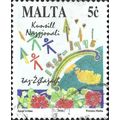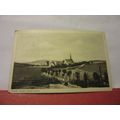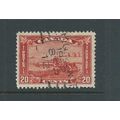Kanpur / Cawnpore, India - Memorial Well - Raphael Tuck Oilette postcard
- Condition : Used
- Dispatch : 2 Days
- Brand : None
- ID# : 128323381
- Quantity : 1 item
- Views : 354
- Location : United Kingdom

- Seller : justthebook (+1704)
- Barcode : None
- Start : Mon 19 May 2014 20:17:24 (BST)
- Close : Run Until Sold
- Remain : Run Until Sold
More Listings from This Seller view all
Seller's Description
- Postcard
- Picture / Image: The Memorial Well, Cawnpore [now Kanpur], India
- Publisher: Raphael Tuck 'Wide Wide World' series Oilette postcard 7234
- Postally used: no
- Stamp: n/a
- Postmark(s): n/a
- Sent to: n/a
- Notes / condition:
Please ask if you need any other information and I will do the best I can to answer.
Image may be low res for illustrative purposes - if you need a higher definition image then please contact me and I may be able to send one.
------------------------------------------------
Postage & Packing:
UK (incl. IOM, CI & BFPO): 99p
Europe: £1.60
Rest of world (inc. USA etc): £2.75
No additional charges for more than one postcard. You can buy as many postcards from me as you like and you will just pay the fee above once. (If buying postcards with other things such as books, please contact or wait for invoice before paying).
Payment Methods:
UK - PayPal, Cheque (from UK bank) or postal order
Outside UK: PayPal ONLY (unless otherwise stated) please. NO non-UK currency checks or money orders (sorry).
NOTE: All postcards are sent in brand new stiffened envelopes which I have bought for the task. These are specially made to protect postcards and you may be able to re-use them. In addition there are other costs to sending so the above charge is not just for the stamp!
I will give a full refund if you are not fully satisfied with the postcard.
----------------------------------------------
Text from the free encyclopedia WIKIPEDIA may appear below to give a little background information (internal links may not work) :
*************
Kanpur (/'k??np??r/ ![]() pronunciation (help·info); Hindi: ??????; Urdu: ??? ????; British: Cawnpore), is the largest industrial city of Northern India and one of the largest in India. It is the administrative headquarters of Kanpur Nagar district and Kanpur division. It is known as Leather City as it contains some of the largest and finest tanneries in India. It is one of the most polluted cities in the world and the second most polluted in India after Ludhiana (survey 2013). Kanpur is the largest city of the state followed by the state capital Lucknow and is one of the main centres of commercial and industrial activities.
pronunciation (help·info); Hindi: ??????; Urdu: ??? ????; British: Cawnpore), is the largest industrial city of Northern India and one of the largest in India. It is the administrative headquarters of Kanpur Nagar district and Kanpur division. It is known as Leather City as it contains some of the largest and finest tanneries in India. It is one of the most polluted cities in the world and the second most polluted in India after Ludhiana (survey 2013). Kanpur is the largest city of the state followed by the state capital Lucknow and is one of the main centres of commercial and industrial activities.
Kanpur is situated on the bank of river Ganges and has been an important place in the history of modern India. Kanpur was one of the main centers of industrial revolution in India. Towards the end of 19th century, Sir John Burney Allens established a group of companies such as Kanpur Textiles, Cawnpore Woollen Mills (Lal Imli), Flex Shoes Company, Elgin Mills and North Tannery under the banner of British India Corporation having headquarters at Kanpur. In the beginning of 20th century, Lala Kamlapat established a group of companies such as; J.K. Cotton Mills and J.K. Iron etc. under the banner of J.K. During the same period Sir J. P. Srivastava established New Victoria Mills.The Jaipuria family bought Swadeshi Cotton Mills from the Horsman family and in 1928 Sardar Inder Singh founded India's First steel re-rolling mill at Singh Engineering which later became one of India's biggest steel rolling mills. British Government also established a number of factories like; Ordnance Factory, Kanpur and Parachute Factory in 1886 to supplement their defence requirements.[5]
It has an area of over 605 km2 with an approximate population of 2.5 million inhabitants in its area. It is administratively divided into 6 zones and 110 wards with a ward population range of 19,000 to 26,000.[6] It is the 75th largest city in the world.[7]
...
the 19th century, Kanpur was an important British garrison with barracks for 7,000 soldiers. During the Indian Rebellion of 1857, (known in the United Kingdom as the Indian Mutiny, known in India as the First War of Independence), 900 British were besieged in the fortifications for 22 days by rebels under Nana Sahib Peshwa. They surrendered on the agreement that they would get safe passage to the nearby Satti Chaura Ghat whereupon they would board barges and be allowed to go by river to Allahabad.
Though controversy surrounds what exactly happened at the Satti Chaura Ghat, and who fired the first shot, it is known that soon afterwards, the departing British were shot at, by the rebel sepoys, and were either killed or captured. Some of the British officers later claimed that the rebels had placed the boats as high in the mud as possible, on purpose to cause delay. They also claimed that Nana Sahib's camp had previously arranged for the rebels to fire upon and kill all the English. Although the East India Company later accused Nana Sahib of betrayal and murder of innocent people, no evidence has ever been found to prove that Nana Sahib had pre-planned or ordered the massacre. Some historians believe that the Satti Chaura Ghat massacre was the result of confusion, and not of any plan implemented by Nana Sahib and his associates. Lieutenant Mowbray Thomson, one of the four male survivors of the massacre, believed that the rank-and-file sepoys who spoke to him did not know of the killing to come.
Many were killed and the remaining 200 British women and children were brought back to shore and sent to a building called the Bibighar (the ladies' home). After some time, the commanders of the rebels decided to execute their hostages. The rebel soldiers refused to carry out orders, and butchers from the nearby town were brought in to kill the hostages three days before the British entered the city on July 18. The dismembered bodies were thrown into a deep well nearby. The British under General Neill retook the city and committed a series of retaliations against the rebel Sepoys and those unfortunate civilians caught in the area, including women, children and old men. The Kanpur Massacre, as well as similar events elsewhere, were seen by the British as justification for unrestrained vengeance.[10]
The British dismantled the Bibighar and raised a memorial railing and a cross at the site of the well. In 1862, they built a church called All Souls' Cathedral in memory of those killed; renamed the Kanpur Memorial Church. This Church still stands at what was the northeast corner of Wheeler’s entrenchment. The marble gothic screen with the famous 'mournful seraph' was transferred to the churchyard after independence in 1947, and in its place a bust of Tantya Tope installed at Nana Rao Park. The well is now bricked over, but the remains of a circular ridge and 'Boodha Bargad' (Old Banyan Tree) are still there. The ""Boodha Bargad"" is not there anymore. Only a stone describing the Boodha Bargad is there.
After 1857 it became an important center of the leather and textile industries. The Government Harness And Saddlery Factory was set up in 1860 to supply the army with leather products, followed by Cooper Allen & Co in 1860. The first cotton textile mill, The Elgin Mills was started in 1862 and the Muir Mills in 1880, and many others followed in the next 40 years such as Victoria Mills and Atherton West & Co. made Cawnpore a major textile producer. The Elgin Mills of Cawnpore was famous for its Drill Khakhi during the early/mid Twentieth Century. The Khaki cloth was famous for its colour and durability. The man behind this was the Dyeing Master Gopal Sadashiv Gogate, who died on 17 December 1942.
The British India Corporation (BIC) was headquartered here and led the development of many industries.The Juggilal Kamlapat Singhania launched many factories between 1930 and 1970. The Jaipuria family contributed to the patriotic cause by building The Swadeshi Cotton Mills in response to charges that the foreign rulers were raiding India of its cotton only to sell it back to its residents.The first steel re-rolling mill of India was established at Singh Engineering which later became one of India's largest steel re-rolling mills. Kanpur was known as the ""Manchester Of India"" in the twentieth century. Kanpur was the largest trading and manufacturing center in the United Provinces.
Kanpur is an important center of India's leather industry and small arms. It has five Indian ordinance Factories viz Ordinance Equipment Factory, Field Gun Factory, Ordinance Parachute Factory, Small Arms Factory, Ordinance Factory which manufacture products of the Indian Armed Forces.
type=printed postcards
theme=topographical: rest of the world
sub-theme=asia
county/ country=india
number of items=single
period=pre - 1914
postage condition=unposted
Listing Information
| Listing Type | Gallery Listing |
| Listing ID# | 128323381 |
| Start Time | Mon 19 May 2014 20:17:24 (BST) |
| Close Time | Run Until Sold |
| Starting Bid | Fixed Price (no bidding) |
| Item Condition | Used |
| Bids | 0 |
| Views | 354 |
| Dispatch Time | 2 Days |
| Quantity | 1 |
| Location | United Kingdom |
| Auto Extend | No |



 for 1 item(s)
for 1 item(s)













![ITALIEN ITALY [Porto] MiNr 0014 ( O/used )](https://pic.ebid.net/upload_small/4/3/6/1548315923-31286-3.jpg)




